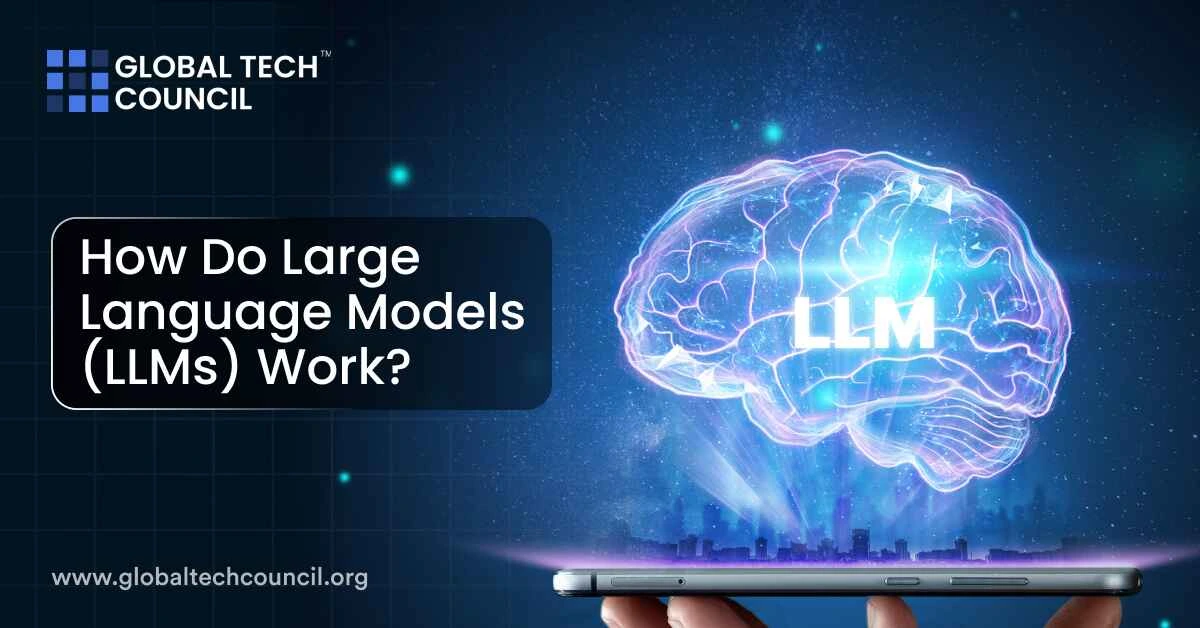Large Language Models (LLMs) are now an important part of artificial intelligence (AI). You’ve probably interacted with them through chatbots, digital assistants, or even tools that help with writing. LLMs handle and create text that feels close to human language, making AI interactions more natural and easier to use. These models can handle tasks like translating languages, providing answers, or even writing complex pieces of text.
What Makes a Language Model “Large”?
At the basic level, a language model predicts the next word in a sequence. It might finish a sentence or even create paragraphs. What makes a large language model different from smaller ones is the number of parameters it works with—often billions. These parameters are connections in the model’s neural network, helping it to find patterns in large amounts of text data. Examples like GPT-4 or Google’s Gemini are prime models that can process and generate human-like text based on the huge amount of information they’ve absorbed.
The Key Structure: The Transformer Model
At the heart of LLMs is a design known as the Transformer architecture, introduced back in 2017. Before this, AI systems mainly relied on methods like Recurrent Neural Networks (RNNs) to process sequences of text. RNNs worked by going through text in a specific order, which didn’t work well for long pieces. Transformers, however, use something called self-attention. This lets the model understand connections between words in a text, even when those words are far apart from each other. This method allows the model to give more accurate and relevant replies.
For example, in a sentence such as “The dog chased the ball, and then it ran away,” the model uses self-attention to understand that “it” is referring to “the dog.” This skill is important for generating text that makes sense and matches the context of the conversation.
Training LLMs
Training LLMs involves using huge amounts of text data, such as books, web pages, or articles. During training, the model learns language patterns—things like grammar, meaning, and context. This is called pretraining. Basically, the model is reading through vast amounts of text and picking up on the relationships between different words.
After pretraining, some models go through a process called fine-tuning. This step helps them specialize in specific areas by being trained further on certain tasks or types of data, like customer service or medical information. This makes the model better at handling questions or tasks in these specialized areas.
The process of training requires significant computing resources. Adjusting billions of parameters can take weeks or even months, often using supercomputers. A technique called stochastic gradient descent is commonly used during this stage to make the model’s predictions more accurate over time, gradually improving its performance.
How LLMs Generate Text
Once trained, an LLM can create text by predicting what word should come next, similar to how your phone’s autocomplete works. But because these models have access to so much data, they can make much more advanced predictions. For instance, if you start a story with, “Once upon a time, there was a brave knight who,” the model could generate an entire storyline based on other similar texts it has encountered before.
LLMs can also do tasks like summarizing, paraphrasing, or creating fresh content from a prompt. One of their strong points is the ability to mimic different styles of writing, whether it’s casual, formal, or even creative.
Uses of LLMs
LLMs have a variety of practical uses, including:
- Content Creation: They can help with writing articles, marketing content, or reports. Many companies use LLMs to automate these tasks and generate human-like text.
- Chatbots and Virtual Assistants: LLMs like GPT are behind many chatbots, allowing businesses to handle customer service efficiently. These models can handle complicated questions, allowing users to get responses faster.
- Language Translation: LLMs can translate between different languages, often providing more precise results than older techniques.
- Code Writing: Models like Codex can help developers by converting natural language descriptions into actual code, speeding up the software development process.
Challenges and Ethical Concerns
Despite their capabilities, LLMs come with their own set of challenges. One major concern is bias. Since LLMs learn from data found online, they might pick up on and replicate harmful biases, such as those related to gender or race. For example, if not carefully controlled, an LLM could generate biased or offensive content.
Another issue is misinformation. LLMs don’t really understand the text they create; they simply recognize patterns. Because of this, they may produce text that seems believable but is incorrect. This can be particularly risky in fields like healthcare or legal advice.
A third challenge is energy use. Training an LLM demands large computing power, which leads to high energy usage. As LLMs become more common, finding ways to make them more energy-efficient will be important.
Conclusion
Large Language Models represent a big development in AI’s ability to work with human language. Built around Transformer architecture, these models learn from huge datasets and can generate highly coherent text. They are used in many industries, from customer support to content creation. However, these models also present challenges, particularly when it comes to bias and energy use. As the use of LLMs grows, addressing these issues will be important to ensure they are used responsibly.
